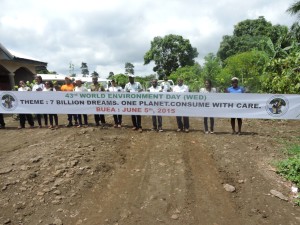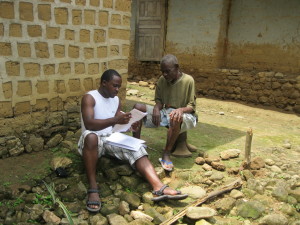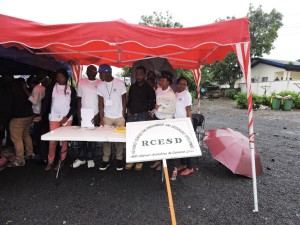Mbunya Francis Nkemnyi March 24, 2015 Comments
The future the Cross River gorilla in the Cameroon Landscape
The Cross River gorilla is the most endangered of the African apes, and is one of the world’s 25 most endangered primates according to the IUCN Primate Specialist Group (Mittermeier et al. 2009). It is classified as critically endangered which is the highest ranking for species that remain in the wild, and this means that the population has decreased, or will decrease, by 80% within three generations. The CONTINUED fragmentation of CRG habitat across a large, complex area, together with the threat from hunting and the small number of gorillas remaining, has led to its critically endangered status (Bergl 2006, Singer 2008)
fragmentation of CRG habitat across a large, complex area, together with the threat from hunting and the small number of gorillas remaining, has led to its critically endangered status (Bergl 2006, Singer 2008)

The populations around protected areas are, in most cases, responsible for the degradation of forest resources. This is because most of the people in these areas depend on the forest for their livelihood. Local people are often highly dependent on forest natural resources to meet both development and basic livelihood needs(Nkemnyi, 2011).The contribution of conservation objectives to local livelihood needs will depend on how well PROGRAMS are embedded in sociocultural context, politics, (Dressler et al. 2010), as well as implementation strategies Adding to this, natural resource management requires concerted effort at multiple levels and local actors in the protection of ecological resources, both in the short term and long term (Agrawal et al. 2008; Mugabe et al. 2010).
are embedded in sociocultural context, politics, (Dressler et al. 2010), as well as implementation strategies Adding to this, natural resource management requires concerted effort at multiple levels and local actors in the protection of ecological resources, both in the short term and long term (Agrawal et al. 2008; Mugabe et al. 2010).

The use of a participatory approach in forest resource management can contribute to sustainable management (Nyaupane and Thapa 2006).The way in which different stakeholders participate in the Wildlife conservation projects is shaped by how they perceive the goals and outcomes of participation. This sometimes contributes to the overall success of the conservation projects.(Mbunya F. Nkemnyi, Arend de Haas, Ndeloh Denis Etiendem, 2013)
There is need for urgent intervention, and warrants policy makers and implementers to put in concerted efforts to understand the realities of the CRG habitat, as well as perceptions including the various stakes involved. The populations around protected areas are, in most cases, responsible for the degradation of forest resources. This is because, a majority of the people in this area depend on the forest for their livelihoods (Nkemnyi et al, 2013).Some studies show that Successful implementation of management plans is considered unlikely without stakeholder commitment and also that involving stakeholders in the decision process is supposed to build trust and establish legitimacy, (Green et al. 2013, Berkley 2013, Scarlett 2013). Others have also shown that the probability of degradation of a forest declines with increases in the level of local enforcement (Chhatre & Agrawal, 2008). It is therefore necessary to assess the influence of local participation in the implementation of CRG conservation strategies.



